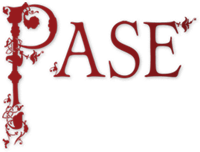Table of Contents
Top of page
Name
Summary
Distribution Map
Property List
Profile
Bibliography
Bottom of page
Lutting 3
Lutting ‘of Colne’ (Essex), fl. 1066
Male
DWP
4 of 5
Summary
Lutting 3 had a tiny estate in north Essex TRE assessed at only 40 acres that had a value of 20s in 1086 (the TRE value is not given).Distribution map of property and lordships associated with this name in DB
List of property and lordships associated with this name in DB
Holder 1066
| Shire | Phil. ref. | Vill | DB Spelling | Holder 1066 | Lord 1066 | Tenant-in-Chief 1086 | 1086 Subtenant | Fiscal Value | 1066 Value | 1086 Value | Conf. | Show on Map |
|---|---|---|---|---|---|---|---|---|---|---|---|---|
| Essex | 90,68 | Colne | Luttinus | Lutting 'of Colne' | - | Richard fitzGilbert | - | 0.33 | 1.00 | 1.00 | C | Map |
| Totals | ||||||||||||
Profile
Lutting 3’s tiny estate was among numerous such holdings in the Colne valley in north Essex that took their names from that of the river in DB, not all of which have yet been identified. However, because in 1086 it was held by Richard fitzGilbert (Richard 5) it is likely that Lutting’s estate became part of the lands held from Richard’s descendants by Colne Priory, which can be associated with Berwick Hall in White Colne (Cooper 2001: 131).The entry for Lutting 3’s estate is one of two relating to land in ‘Colne’ held by Richard in 1086 that occur among those dealing with invasiones, or ‘encroachments’, towards the end of the Essex folios in DB. Since the main text of DB for Essex includes only one entry in Richard’s fief that relates to a place called ‘Colne’, it is probable that the two entries among the invasiones are to be associated with this main entry. It records five sokemen ‘whom Wihtgar held’ present TRE and provides details of two component holdings, that of Wulfwine and his two sisters and that of Leofric; there is then a statement that they ‘could not withdraw from Wihtgar’s soke’, although it is not entirely clear if this applied to all five sokemen or just to those for whom the details of their two sub-holdings had just been given. In the two invasiones entries, the one concerning Lutting’s holding notes that Richard’s ‘antecessor had neither customary dues nor commendation’ and the other entry, relating to 5 acres held by Wulfric TRE, notes that Richard now holds them ‘as [he does] the others’.
Unravelling these apparently interrelated entries, the first observation is that ‘Richard’s antecessor’ in the Lutting entry must surely be Wihtgar, a local magnate TRE who was Richard’s antecessor not only at Colne but also for much of his fief and may have been the deputy sheriff of Essex at the time of the Conquest (Mortimer 1981: 128-31; Wareham 2005: 99-100). The fact that Lutting’s and Wulfric’s former lands were entered under the invasiones implies an irregularity in Richard’s tenure of them in 1086. So far as Lutting is concerned, the strong implication is that Richard had not acquired the land through Lutting being a dependent tenant of Wihtgar (or else the holding could have been entered under his main fief without problem) and that, since Lutting had not been in Wihtgar’s commendation, Richard had acquired the land either because Wihtgar had had the soke of it or else simply because it was in close proximity to the other lands at ‘Colne’ that he had acquired legitimately (cf. Baxter 2007: 221-2).
Although Lutting’s commended lord remains unknown and it is not clear if he was a dependent tenant or, perhaps more likely, a man holding his land freely, DB does provide a few details about his tiny estate. He had a dependent peasant population of four bordars and their households to provide the workforce for his 40 acres and the plough he had there. This size of population for such a small estate suggests that it was predominantly arable, although woodland and a small amount of meadow were also recorded in 1086. By that latter date a mill was also recorded; but DB’s use of modo ‘now’ here suggests this had been acquired or built since the Conquest.
This was the only estate recorded as held by someone called Lutting TRE and there is no reason to consider Lutting 3 in connection with any other person or estate.
Bibliography
Baxter 2007: S. Baxter, The Earls of Mercia: Lordship and Power in Late Anglo-Saxon England (Oxford, 2007)
Cooper 2001: J. Cooper, ed., A History of the County of Essex: Volume 10: Lexden Hundred (Part) Including Dedham, Earls Colne and Wivenhoe (London, 2001)
Mortimer 1981: R. Mortimer, ‘The beginnings of the honour of Clare’, Anglo-Norman Studies 3 (1981), 119–41
Wareham 2005: A. Wareham, Lords and Communities in Early Medieval East Anglia (Woodbridge, 2005)
